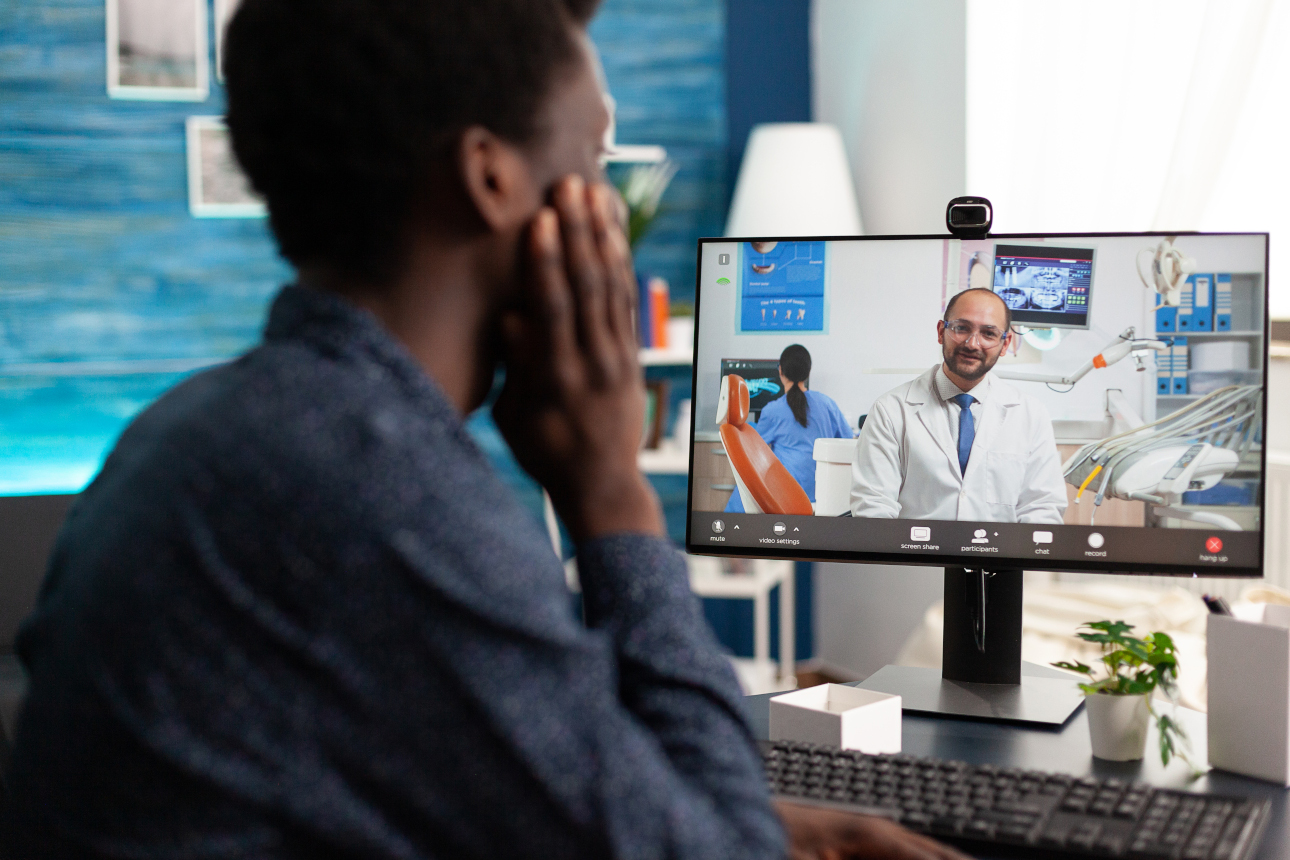Since the onset of the COVID-19 pandemic, staffing challenges have been a pain point for dentistry, with patients in some states waiting as long as 14 months to get a routine cleaning. Maintaining oral health is crucial to the overall health of the body and wellbeing of the patient, and indeed teeth can be a window to internal health by providing early detection of certain life-threatening medical concerns. With many patients missing this important aspect of preventive care, today’s staffing shortages pose even greater risks impacting public health. Let’s explore how telehealth in dentistry could bridge gaps in access to oral healthcare.
From pandemic necessity, telehealth experienced an unprecedented surge, quickly becoming an essential component of modern healthcare. Thus, tele-dentistry has emerged as an innovative solution for dental practices facing dual challenges of staffing shortages and increasing patient demands. By enabling remote consultations, follow-ups and patient education, this technology offers a strategic approach to extend care beyond traditional settings and optimize the use of limited resources.
How Telehealth is Transforming Dentistry
Tele-dentistry technologies have revolutionized remote dental care by leveraging video meeting tools, secure messaging platforms and digital imaging to facilitate oral health consultations and diagnoses remotely. These platforms enable dentists to review digital photographs, x-rays and oral health data shared by patients without the need for physical office visits. Additionally, integrated electronic health records (EHR) systems ensure seamless sharing of patient information.
These virtual technologies can aid in patient education, follow-ups and scheduling, making dental care more accessible, convenient and lower in cost, with potential to eliminate disparities in oral health care between rural and urban communities. Cost-savings can carry over too to the dental practices themselves, with fewer in-person appointments reducing the need for physical office space, exam rooms or staff PPE (personal protective equipment).
Practical uses of telehealth tech may also help alleviate staff workload by streamlining or automating client interactions and processes. Some platforms may even enable the harnessing of AI to enhance the patient experience and improve efficiency of dental staff.
Implementation of a robust telecommunications system may also have marketing implications that could elevate the brand identity of a dental practice while nurturing relationships with patients. Consider innovative strategies like virtual open-houses, online Q&A sessions, meet-and-greets and more, enabling connection with potential new patients with ease and convenience. Increasing patient demand for virtual solutions in health means that implementing a telehealth strategy may also enhance practice relationships with insurance payers.
Setting Up For Telehealth Success
To employ a telehealth strategy, a dental practice will need reliable video conferencing software and applicable accessories, secure data transmission tools for sharing patient records, dual monitor stations for EHR documentation note-taking and intraoral devices capable of capturing high-quality digital images. Additionally, understanding and complying with patient privacy laws and telehealth regulations is critical to ensure ethical and lawful healthcare delivery.
For effective virtual consultations, ensure clear communication and bedside manner by asking specific questions to accurately assess symptoms, using high-quality images or videos for preliminary diagnoses, using overall best practices for virtual communications, providing clear and concise advice or treatment options and even adjusting web cameras to ensure eye contact with patients.
Utilize telehealth tech for follow-up appointments by automating patient reminders, sharing educational materials digitally to reinforce oral health practices or treatment plans and monitoring progress and adjusting treatments. These tech interventions will boost patient engagement and adherence to care plans, thus improving treatment outcomes and patient satisfaction.
To seamlessly integrate tele-dentistry services with traditional in-office care, dental practices should establish clear protocols for determining which patient concerns can be addressed remotely versus those requiring in-person care, using a centralized scheduling system that facilitates both types of appointments. Ensuring maintenance of comprehensive digital patient records accessible during both types of visits will ensure continuity of care and enhance the overall patient experience.
Dental Care Reimagined
Tele-dentistry could significantly expand the scope and reach of dental services, bridging gaps in access to care amidst workforce challenges. Dental professionals should carefully consider and explore the incredible potential of tele-dentistry solutions for their own unique challenges, enabling adaptation to the evolving healthcare landscape and meeting the changing needs of patients effectively.
SOURCES: Becker’s Dental + DSO Review, Institute of Medicine (US) Board on Health Care Services, Journal of International Society of Preventive & Community Dentistry





